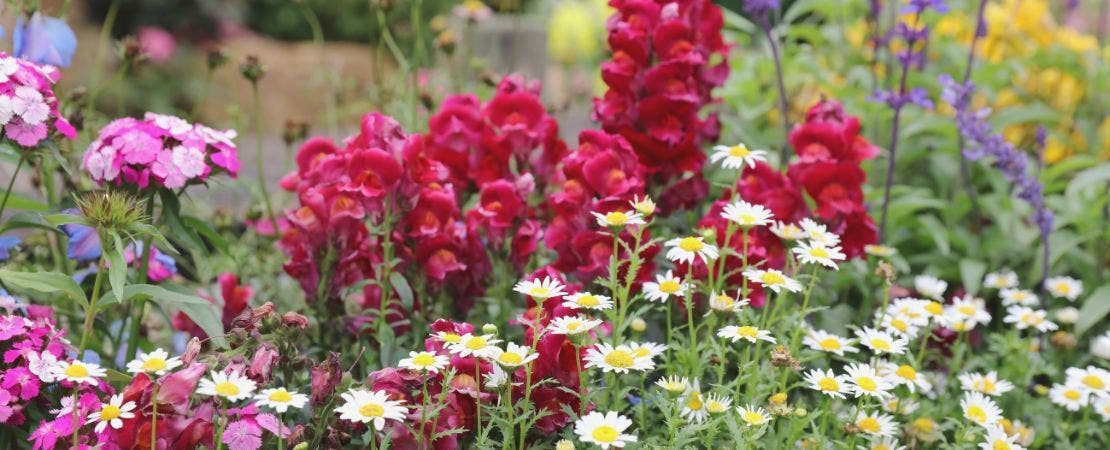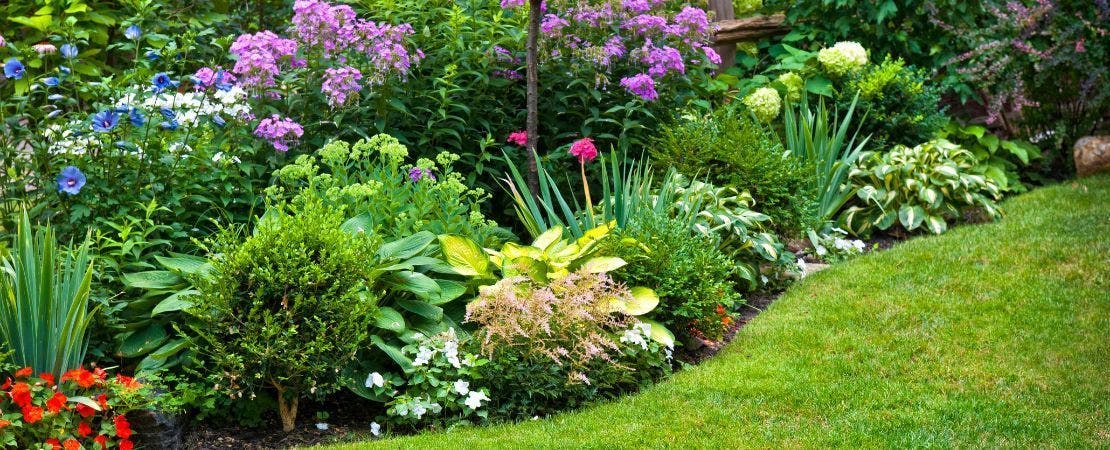Seasonal Tips for Transplanting Perennials: Spring and Fall
Transplanting perennials is a common gardening practice that breathes new life into your landscape. Whether you’re relocating a plant to a sunnier (or shadier) spot, dividing an overgrown clump, or refreshing your garden design, knowing the best time to transplant perennials is important for their survival and long-term health. The timing of your efforts can make all the difference.
Seasonal timing depends on the perennial’s growth habits, bloom cycle, and dormancy period. While some plants prefer the warmth and growth potential of spring, others benefit from the cooler temperatures and slower growth of fall. This guide will help you identify the optimal seasons for transplanting popular perennials, including tips to ensure a smooth transition for your plants.
Why Timing Matters When Transplanting Perennials
Perennials are resilient plants that return year after year, but they are not immune to stress. Transplanting disrupts their roots, which can hinder water and nutrient uptake. Timing your transplant during a plant’s dormant or less active period minimizes this stress, giving roots time to reestablish before new growth begins.
Spring and fall are widely regarded as the best seasons for transplanting perennials. Spring offers warming soil and ample moisture to support root growth, while fall’s cooler temperatures allow plants to settle in before winter dormancy. However, some perennials tolerate transplanting in either season, and a few thrive when moved in the summer if handled carefully.


Perennials to Transplant in Spring
Spring transplanting is ideal for perennials that bloom in late summer or fall, as it provides plenty of time for roots to establish before they focus on flowering. Additionally, plants that are particularly sensitive to cold temperatures often do better when moved in spring.
Peonies
Peonies prefer spring transplantation, especially if they were previously overcrowded or struggling in their current location.
- Tip: Replant with the crown just below the soil surface to encourage flowering.
Hostas
These shade-loving perennials are forgiving when transplanted in spring as they begin to emerge from dormancy.
- Tip: Water thoroughly after moving to minimize transplant shock.
Daylilies (Hemerocallis)
Spring is the best time to transplant daylilies to give them a full growing season to adjust.
- Tip: Divide clumps for better spacing and enhanced blooms.
Bee Balm (Monarda)
Transplanting in spring ensures strong growth and abundant summer blooms.
- Tip: Thin overcrowded patches to prevent mildew and improve airflow.
Transplanting in spring ensures strong growth and abundant summer blooms. Thin overcrowded patches by dividing to prevent mildew and improve airflow--you can expand your garden or share with friends and neighbors.


Perennials to Transplant in Fall
Fall is an excellent time to transplant perennials that bloom in spring or early summer. The soil is still warm enough to encourage root growth, while the cooler weather reduces stress on the plant.
Irises
Fall is the preferred season for transplanting irises, as it aligns with their natural dormancy after blooming.
- Tip: Cut back foliage to reduce water loss and replant rhizomes just below the soil surface.
Coneflower (Echinacea)
Transplanting coneflowers in fall ensures they’re ready to burst into bloom the following spring.
- Tip: Add a layer of mulch after transplanting to protect roots from frost.
Black-Eyed Susans (Rudbeckia)
Move these cheerful perennials in fall to take advantage of cooler temperatures and moist soil.
- Tip: Divide large clumps to reinvigorate their growth.
Phlox (Phlox paniculata)
Garden phlox benefits from fall transplanting, as it allows time to reestablish without competing with its bloom cycle.
- Tip: Choose a location with good air circulation to prevent powdery mildew.
Perennials That Can Be Transplanted in Spring or Fall
Some hardy perennials tolerate transplanting in both spring and fall. These plants are adaptable, making them ideal for gardeners with unpredictable schedules or varying climates.
Astilbe
This shade-loving perennial is resilient when moved during dormancy in spring or early fall.
Stonecrop (Sedum)
Low-maintenance and drought-tolerant, sedums are easy to transplant in either season.
Shasta Daisies (Leucanthemum)
These cheerful daisies adapt well to spring or fall moves, ensuring a steady display of blooms.
Yarrow (Achillea)
Tough and reliable, yarrow transplants easily and thrives in both seasons.
Tips for Successful Perennial Transplanting
- Prepare the New Location: Amend the soil with compost or organic matter to provide a nutrient-rich environment for the transplanted perennial.
- Water Well: Water thoroughly both before and after transplanting to help plants settle and avoid dehydration.
- Minimize Root Disturbance: Dig a wide, deep hole to preserve as much of the root ball as possible.
- Timing Matters: Avoid transplanting during extreme heat or frost periods.
- Add Mulch: Apply a layer of mulch to regulate soil temperature and retain moisture.
What to Avoid When Transplanting Perennials
Some plants are finicky about being moved, and improper timing or technique can lead to transplant shock or poor performance. Always research the specific needs of your plants and avoid moving them during their peak blooming periods.
Perennial Transplanting Seasons Chart
Here is the corrected and alphabetically ordered chart:
| Plant | Recommended Transplanting Season |
|---|---|
| Agastache | Spring |
| Artemisia | Spring |
| Asiatic Lilies | Spring |
| Aster | Spring |
| Astilbe | Fall |
| Bee Balm | Spring or Fall |
| Black-eyed Susan | Spring or Fall |
| Blanket Flower | Spring or Fall |
| Clematis | Spring or Fall |
| Coneflower | Spring or Fall |
| Daylilies | Spring or Fall |
| Delphinium | Spring |
| Dianthus | Spring |
| Dicentra (Bleeding Heart) | Fall |
| Fern | Spring |
| Feverfew | Spring |
| Goldenrod | Spring |
| Hellebore | Fall |
| Heuchera | Fall |
| Hosta | Spring or Fall |
| Iris | Fall |
| Lavender | Fall |
| Liatris | Spring |
| Lily | Fall |
| Milkweed | Spring |
| Mums | Spring |
| Obedient Plant | Spring |
| Ornamental Grasses | Spring or Fall |
| Peony | Fall |
| Phlox | Fall |
| Russian Sage | Fall |
| Sedum | Spring or Fall |
| Veronica | Fall |
| Yarrow | Spring or Fall |
Regional Notes
Differences in transplanting recommendations often arise from variations in climate, regional practices, and plant species within the same genus.
Source Variability: Source information and specific recommendations can differ based on regional climates or the authors' experiences. For example, perennials like lavender may transplant better in fall in mild climates but thrive with spring transplanting in areas with harsh winters.
Plant Dormancy vs. Activity: Some perennials, like coneflowers and hostas, can be transplanted in both spring and fall because they are hardy and adjust well during dormancy or early growth stages. Other plants may show slight preferences for one season over another based on how quickly they establish roots.
Regional Climate Considerations
- Fall Transplanting: In regions with mild falls and winters, transplanting in the fall allows roots to establish before the ground freezes.
- Spring Transplanting: In colder regions with shorter growing seasons, spring transplanting gives plants a full season to recover and grow before dormancy.
Species-Specific Needs: Even within the same genus, different species or cultivars might react differently to transplanting. For instance, some phlox varieties tolerate transplanting well in both spring and fall, while others are better moved in fall after blooming.





